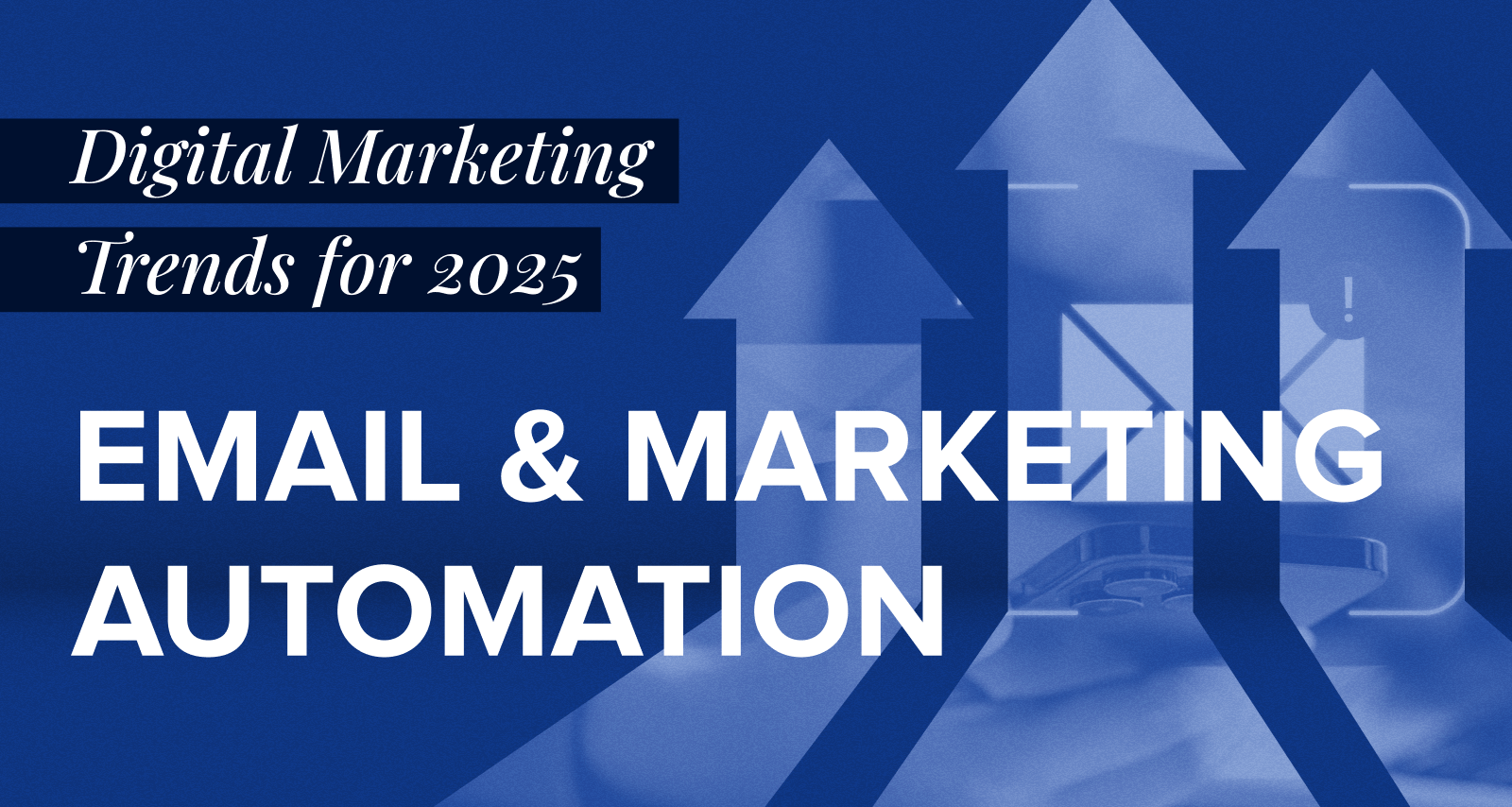Digital Marketing Trends for 2025: Email & Marketing Automation Strategy
Published by Spinutech on December 2, 2024

2025 is a new year, but the challenge for marketers remains the same: Every dollar needs to show measurable results. To do that, you need to stay ahead of the curve and adapt your strategy. Success will be determined by how well you adapt to new technology, shifting audience expectations, and rising performance demands.
Our experts at Spinutech have spent the past year developing strategies and driving results for our clients — and gathering insights along the way. We don’t need tea leaves to predict what is on the horizon in 2025. The road ahead is paved by performance data and industry trends.
Our Digital Marketing Trends for 2025 series will be your guide to navigating the sea of changes taking place across all digital marketing channels in 2025.
The focus of this installment: Email & Marketing Automation Strategy.
Email & Marketing Automation Strategy Trends for 2025
Email and marketing automation (EMA) remains a powerhouse for driving engagement, building relationships, and nurturing leads. However, as customer expectations evolve and technology advances, the role of EMA is expanding.
Here are eight trends to know for 2025:
1. It’s Time to Get Hyper-Personal
The Trend: Personalization in 2025 is going to extend well beyond first names and segments. AI-powered tools now leverage behavioral data, purchase history, and preferences to create dynamic content that feels bespoke to each recipient. Brands that master hyper-personalization will better stand out in crowded inboxes, especially if their goal is lead generation.
What Brands Can Do:
- Use AI-driven tools to analyze customer behavior and tailor email content dynamically
- Incorporate personalized recommendations based on purchase history or browsing data
- Design emails that adapt in real time to recipient interactions or preferences
2. You Can Never Have Enough Zero-Party Data
The Trend: With growing privacy regulations, brands must focus on collecting zero-party data — information customers willingly share, such as preferences or survey responses. This data helps create tailored experiences while building trust.
What Brands Can Do:
- Use interactive email features like surveys, quizzes, and preference centers to collect zero-party data
- Reward customers for sharing their preferences with exclusive offers or personalized content
- Integrate zero-party data into segmentation and automation workflows for better targeting
3. AI-Powered Predictive Analytics Offer a Competitive Edge
The Trend: Predictive analytics in marketing automation tools will anticipate customer needs and optimize campaigns. AI can determine the best time to send emails, recommend products, and forecast customer behavior to enhance engagement and conversions.
What Brands Can Do:
- Leverage AI tools to send emails at optimal times for individual recipients
- Use predictive analytics to recommend products or services aligned with customer preferences
- Automate follow-ups and nurture sequences based on predicted customer actions
4. Get Interactive With Your Emails
The Trend: Interactive elements like carousels, live polls, and embedded videos are making emails more engaging. AMP for Email technology will become more prevalent, allowing real-time content updates and reducing the need for recipients to leave their inboxes.
What Brands Can Do:
- Incorporate interactive features like polls or image carousels into your emails
- Use AMP for Email to deliver real-time updates, such as dynamic pricing or live inventory
- Embed engaging video content to keep recipients connected to your brand
5. Email is the Bridge Between Your Channels Together
The Trend: Email will increasingly serve as the linchpin in omnichannel marketing strategies, connecting channels like SMS, in-app notifications, and social media to create a cohesive customer journey.
What Brands Can Do:
- Use email to trigger and complement interactions on other channels, like SMS or push notifications
- Ensure messaging and visuals are consistent across all touchpoints
- Build unified automation workflows to connect email with social media and in-app experiences
6. Customer Retention is as Important as Acquisition
The Trend: Market pressures are shifting focus from acquisition to retention. Email campaigns will emphasize loyalty programs and nurturing strategies designed to deliver value and foster long-term customer relationships.
What Brands Can Do:
- Create exclusive loyalty rewards for email subscribers
- Develop nurture campaigns that educate and engage customers post-purchase
- Use email to spotlight customer success stories and build trust
7. AI is Opening Doors for Email Marketers
The Trend: AI tools are streamlining content creation and testing processes, from generating subject lines to A/B testing campaigns at scale. Marketers can identify winning strategies faster and create more resonant content.
What Brands Can Do:
- Use AI to draft subject line variations and copy tailored to specific audiences
- Automate A/B testing for subject lines, content layouts, and CTAs
- Analyze AI-driven insights to continually refine your email strategy
8. Privacy is Changing How You Measure Performance
The Trend: Privacy-first strategies are essential as tools like Apple’s Mail Privacy Protection (MPP) evolve. Open rates will become less reliable, prompting a shift toward engagement-focused metrics like click-through rates and conversions.
What Brands Can Do:
- Shift focus from open rates to actionable metrics like clicks and conversions
- Implement first-party data strategies to build direct, privacy-compliant relationships
- Communicate your commitment to user privacy in your email campaigns
Is Your Email & Marketing Automation Strategy Ready for 2025?
Email marketing in 2025 is about delivering hyper-personalized, engaging experiences that integrate seamlessly with other channels while respecting privacy. Brands that embrace these trends and adapt their strategies will be well-equipped to thrive in an evolving landscape.
If you’re ready to build a better EMA strategy for 2025, let’s chat.